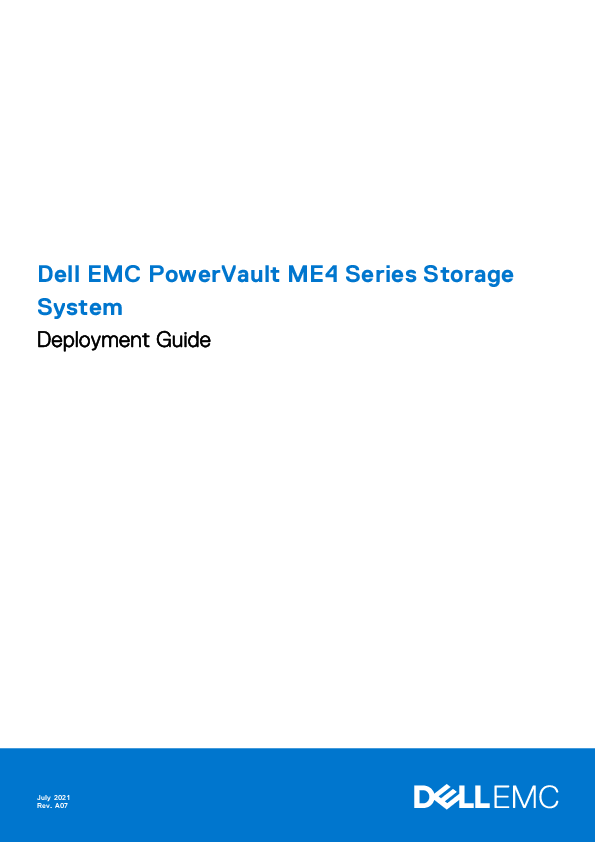ℹ️ Document Conversion Notice:
This page was converted from the original file for easier reading. Diagrams/images may appear only in the original PDF below.

File info: application/pdf · 107 pages · 6.28MB
Dell EMC PowerVault ME4 Series Storage System Deployment Guide
This document provides essential guidance for the initial hardware setup and deployment of Dell EMC PowerVault ME4 Series Storage Systems. It covers critical steps from unpacking and safety precautions to rack installation, host connectivity, and system configuration.
Key Deployment Stages
- Unpacking and Safety: Detailed instructions on safely unpacking enclosures and adhering to safety guidelines.
- Rack Installation: Procedures for mounting 2U and 5U84 enclosures in standard 19-inch racks, including necessary tools and requirements.
- Host Connectivity: Guidance on cabling host servers to the storage system using various protocols like Fibre Channel, iSCSI, and SAS.
- System Setup: Steps for connecting power, performing initial system configuration, and setting up host systems.
- Troubleshooting: Resources for identifying and resolving common issues encountered during setup and operation.
Following this guide ensures a successful and efficient deployment of the PowerVault ME4 Series storage solution.